CELIA (Bordeaux, France)
Research highlights
CELIA-CNRS
Centre Lasers Intenses et Applications, University
of Bordeaux, CNRS, Bordeaux, France

Contact: Dr Stephane Petit
High energy physics
The Electromagnetic Pulses (EMP) mitigation without degrading the proton emission has been a challenge addressed on ECLIPSE 3 facility by P. Raczka's team (Institute of Plasma Physics and Laser Microfusion, Warsaw). A first efficient low EMP proton source prototype has been tested successfully [Laser Part. Beams 35, 677 (2017)].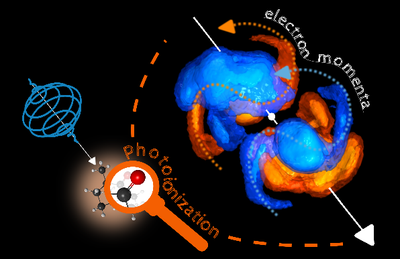
Femtochemistry
An original experiment combining the expertise of Weizmann in attosecond-resolved two-color photoionization and AURORE1 facility of CELIA for ultrafast photoelectron circular dichroism experiments enabled detecting attosecond time-delays between electrons ejected forward and backward from a sample of chiral molecules by circularly polarized light [Science 358, 1288-1294 (2017)].
Femtochemistry
Can a chiral system be probed by an electric field whose vector describes a figure 8 in time, reversing chirality every few hundreds of attoseconds? This question has been addressed with BLASTBEAT facility during an experimental campaign with Weizmann’s team (N. Dudovich) and our observations demonstrate the Control of Subcycle Optical Chirality in the Photoionization of Chiral Molecules [Phys. Rev. X 9, 031004 (2019)].
Condensed matter
The fast emission of wide-band-gap crystals which occurs in during the relaxation of electronic excitation created by VUV photons with energy several times larger than the forbidden gap energy has been investigated with Aurore3 facility. The results pave the way to Ultra-high time resolution scintillators for Time-of-Flight Positron Emission Tomography or for the registration of ionizing particles in future generation of supercolliders [Radiation Measurements 124, 1-8 (2019)].
Projects performed by external users >>
Further application highlights
3D Biomedical Imaging Lasers and the Universe Lasers for Fusion Energy
Expertise
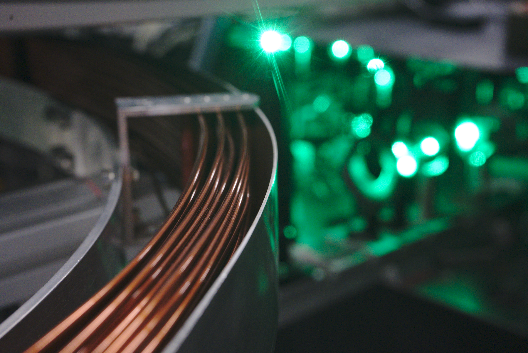
CELIA is a joint research unit (UMR5107) involving a partnership between Bordeaux University (UB), the Atomic Energy Commission (CEA) and the National Scientific Research Center (CNRS). CELIA offers an outstanding opportunity for gathering expertises in laser development, strong Field and/or Ultra-High Intensity Physics, Inertial Fusion for Energy (IFE) and industrial applications of short pulses. CELIA is an active member of the European Large Lasers Network LASERLAB-EUROPE.
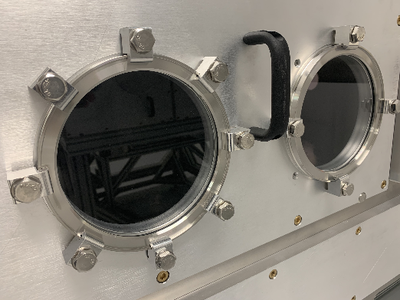
With a total staff of 110 scientists, engineers and students, CELIA is a large research Center with broad expertise in laser/matter interactions, generation of ultra-short pulses of Extreme UV radiation, from picosecond down to attosecond durations, with beamlines dedicated to applications in molecular and solid-state physics; of X-rays – broadband soft X-rays, and hard X-rays up to the g range with applications ranging from time resolved studies or phase contrast imaging in warm dense plasmas up to investigations with a high societal impact such as medical radiography. CELIA displays a specific expertise in the development of high average power, high repetition rate lasers. CELIA has also extended its activity in laser processing and complex correlated spectroscopies in strong connection with industrial partners. Finally, CELIA possesses a particular experience, experimental and theoretical, in high-energy density physics, and physics of hot and dense plasmas. Several spin-off companies, with up to 200 direct new jobs was born at CELIA awarded in 2007 by National Prize for Innovation and Industrial Property (INPI)
Services for Industry
Biomedicine
Bioprinting - Bench developement, characterisation , demonstration and validation of bioprinting with mid-IR lasers.
Instrumentation
Testing - Laser damage tests with ultrashort pulse for a series of coated dielectric deformable membranes for a manufacturer providing high power deformable mirror.
Metrology - Testing and benchmarking of ultrafast laser instrumentation for a manufacturer of ultrafast laser diagnostics.
Photonics/Lasers
Feasibility studies - Developing a Harmonic generation beamline seeded by Yb laser for a ultrafast laser manufacturer, Transfer of knowledge for dimensioning and easy handling postcompression device for Yb-based industrial laser systems to a laser manufacturer, GHz burst mode laser processing for integrated device for a laser manufacturer.
Technology Electronics
Laser development - Development of high power high repetition rate short pulse laser technologies for laser manufacturers.
Equipment offered to external users
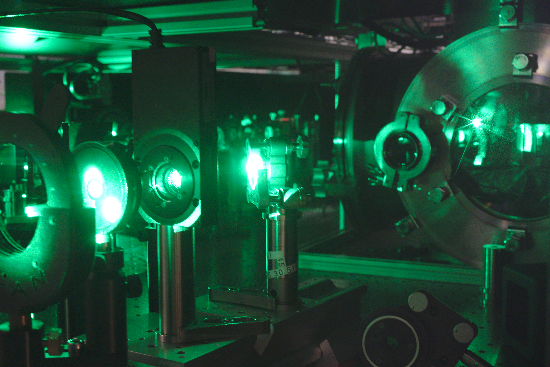
CELIA proposes not just lasers systems, but really integrated end-stations dedicated to a number of specific applications, very much in the spirit of synchrotron radiation centers. CELIA provides to external users (>40% of beamtime) 9 fully equipped and dedicated end-stations fed by 3 state-of-the-art reliable laser systems (80% operating time-7 full-time employees): Ti:Sa AURORE (20 mJ, 1kHz, 25 fs), Ti:Sa ECLIPSE (150 mJ, 10 Hz, 35 fs) and the unique Yb:fiber BLASTBEAT (2*50W 130 fs, 0.166-2 MHz).
| Laser Parameters | AURORE | CYCLONE | ECLIPSE |
| Source Type | Laser | Laser | Laser |
| Laser Type | Ti:sapphire | Yb:fiber | Ti:sapphire |
| Peak Photon Energy / Central Wavelength | 800 nm | 1030 nm | 810 nm |
| Spectral Bandwidth FWHM | 50 nm | 15 nm | 40 nm |
| Beam Shape | Gaussian | Gaussian | Gaussian |
| Pulse Duration FWHM | 25 fs | 130 fs | 45 fs |
| Pulse Repetition Rate | 1 x 103 Hz | 166 x 103 Hz | 10 Hz |
| Maximum Pulse Energy | 8 mJ | 300 x 10-6 J | 150 mJ |
| Pulse Energy Fluctuations | 1 x 10-2 (sigma) | 3 x 10-2 (sigma) | |
| Peak Power | 3 x 1012 W | 2 x 109 W | 3 x 1012 W |

| AURORE | ||
| AURORE 1 | Attoscience |
|
| AURORE 2 | Material science |
|
| AURORE 3 | Condensed matter |
|
| AURORE 4 | Gas-phase femtochemistry |
|
| CYCLONE | ||
| BLASTBEAT | Gas-phase femtochemistry Polarimetry High signal-to-noise ultrafast spectroscopy and imaging |
|
| ECLIPSE | ||
| ECLIPSE2 | Attoscience |
|
| ECLIPSE3 | High energy physics |
|
Other Information
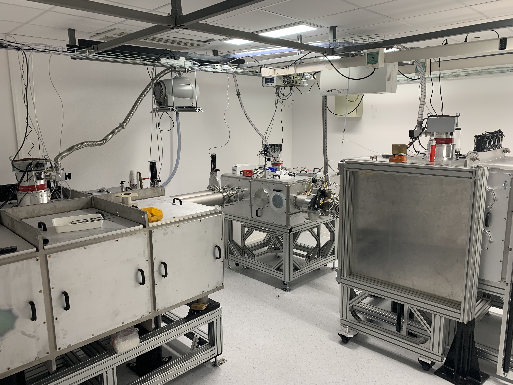
End 2020-beginning 2021, AURORE will be up-graded with new 1kHz-diode-pumped pump lasers providing better shot-to-shot pointing and energy stabilities. A new active deformable mirror with its offline phase-front diagnostics and phase correction will be implemented to provide aberration-free high-Strehl-ratio beams in each beamline.
ECLIPSE is being up-graded to 100 TW to provide high temporal contrast multi-Joule 30 fs laser pulses on solid targets at 1 Hz in a new radio-protected experimental room (ECLIPSE4). The experimental chamber is designed for hard x-ray generation and characterization (detection <=100 keV). ECLIPSE4 opens the route to particles production and acceleration. New users coming from x-ray source for phase contrast imaging (direct radiography and Talbot-Laue interferometers) are expected.

